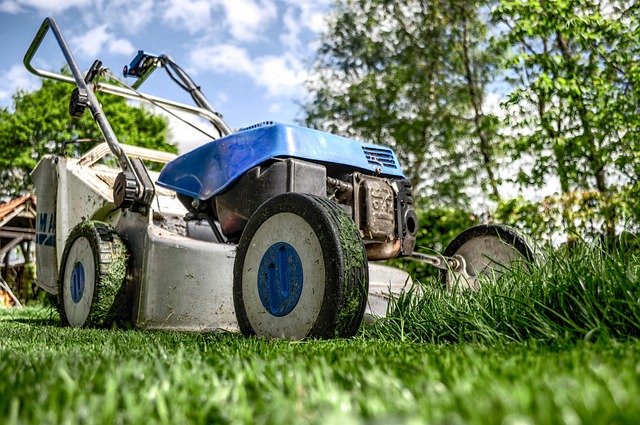Artificial Grass in Gardens: A Growing 2025 Trend and What to Consider Before Installing
As we approach 2025, artificial grass is becoming an increasingly popular choice for homeowners seeking to enhance their outdoor spaces. This low-maintenance alternative to natural lawns offers year-round greenery and a host of other benefits. However, before jumping on this trend, it's essential to understand the pros and cons of artificial grass and consider several factors that may impact your decision. In this article, we'll explore the rising popularity of artificial grass in gardens and discuss key considerations for those contemplating installation.

Environmental Impact: Weigh Your Options Carefully
When considering artificial grass, the environmental implications deserve thoughtful consideration. While synthetic turf eliminates the need for water, fertilizers, and gas-powered lawn equipment, it’s not without environmental drawbacks. Most artificial grass products are made from petroleum-based materials that aren’t biodegradable and will eventually end up in landfills. The manufacturing process also generates carbon emissions, creating an initial carbon footprint higher than natural grass.
However, over the lifespan of the product (typically 15-20 years), artificial grass can help conserve water—an increasingly precious resource. In drought-prone regions, this water-saving benefit might outweigh other environmental concerns. Some newer artificial grass products incorporate recycled materials and are designed with eventual recyclability in mind, though complete recycling remains challenging due to the mix of materials used.
For environmentally conscious homeowners, consider exploring eco-friendlier artificial grass options that use recycled materials or those with improved end-of-life recyclability. Alternatively, drought-resistant natural landscaping with native plants provides another eco-friendly option worth exploring.
Feel Underfoot: Sensory Considerations for Your Garden Space
The tactile experience of artificial grass differs significantly from natural turf—a factor that’s often overlooked during the decision process. Modern artificial grass has come a long way from the plastic-feeling products of decades past, with premium options now featuring varied blade heights, textures, and densities that more closely mimic natural grass.
When selecting artificial grass, consider who will be using the space. For families with children who play on the lawn, softer, more cushioned options with adequate infill provide better protection against falls. Pet owners should look for products specifically designed to resist pet odors and allow for proper drainage of waste liquids.
The sensation underfoot can vary dramatically between products and price points. Budget options often feel more synthetic and can become uncomfortably hot in direct sunlight. Higher-end products with advanced cooling technologies and more realistic textures provide a more natural experience. Before committing, request samples to feel different options and, if possible, visit installed examples to experience how they feel underfoot in real-world conditions.
Tackling Drainage and Heat Issues: Essential Considerations
Two significant practical challenges with artificial grass installations are drainage and heat retention. Unlike natural lawns that absorb water, artificial turf requires proper drainage systems to prevent water accumulation. Professional installation typically includes a permeable base layer of crushed stone or similar material that allows water to drain away from the surface.
Heat retention presents another concern. Synthetic materials can become significantly hotter than natural grass during sunny days—sometimes reaching temperatures uncomfortable for bare feet or pets. Some studies have shown surface temperatures on artificial turf can be 20-50 degrees higher than natural grass under the same conditions. Newer products incorporate cooling technologies that help mitigate this issue, but they typically come at a premium price.
When planning your installation, discuss drainage solutions with your provider, especially if your property has existing drainage challenges. For heat concerns, consider strategic shade placement or selecting newer artificial grass products with cooling features if your garden receives substantial direct sunlight.
Discovering the Hidden Benefits of Artificial Grass
Beyond the obvious advantages of reduced maintenance, artificial grass offers several less-discussed benefits worth considering. For allergy sufferers, synthetic turf eliminates grass pollen, potentially providing significant relief during seasonal peaks. This benefit extends to reducing other common allergens like molds that can proliferate in natural lawns.
Artificial grass also provides consistent usability throughout the year. Rain-soaked natural lawns can become muddy and unusable, while artificial alternatives typically remain functional even after heavy rainfall, provided proper drainage is installed. This year-round usability makes artificial turf particularly valuable for families with children or pets who need consistent outdoor play areas.
Additionally, synthetic grass can solve challenging growing conditions. Areas with deep shade, poor soil quality, or heavy foot traffic where natural grass struggles to grow can be transformed into permanently green spaces with artificial alternatives. For small urban gardens or rooftop spaces where traditional lawn maintenance is impractical, artificial grass offers an accessible green space solution.
Cost Considerations and Provider Comparison
The initial investment in artificial grass is significant, with costs varying widely based on product quality and installation complexity. While the upfront expense exceeds natural lawn installation, long-term savings on water, fertilizer, and maintenance equipment should factor into your financial calculations.
| Provider | Average Cost Per Sq. Ft. | Warranty | Key Features |
|---|---|---|---|
| SYNLawn | $8-$12 | 15 years | Eco-friendly options, pet-specific products, cooling technology |
| Global Syn-Turf | $3-$7 | 15 years | Wide variety of options, drainage technology |
| TigerTurf | $5-$9 | 8-15 years | UV protection, sports-specific options |
| FieldTurf | $7-$11 | 8-15 years | Premium quality, advanced drainage systems |
| ForeverLawn | $8-$14 | 15 years | Premium aesthetics, specialized applications |
Prices, rates, or cost estimates mentioned in this article are based on the latest available information but may change over time. Independent research is advised before making financial decisions.
Installation costs typically add $3-$5 per square foot beyond material costs, depending on site preparation needs and drainage requirements. For a typical 500 square foot installation, total project costs generally range from $3,000 to $8,500. While DIY installation is possible for skilled homeowners, professional installation ensures proper drainage and longevity.
When comparing providers, examine warranty terms carefully. Most reputable companies offer warranties of 8-15 years, but coverage varies significantly regarding what’s included. Some warranties only cover UV degradation, while more comprehensive ones may include coverage for fading, drainage issues, and material defects.
Artificial grass represents a significant garden investment that continues gaining popularity into 2025. While offering substantial benefits in reduced maintenance and consistent appearance, it requires careful consideration of environmental impacts, sensory experience, practical challenges, and financial implications. By thoroughly researching these aspects and selecting quality products with professional installation, homeowners can maximize the benefits while minimizing potential drawbacks of this increasingly popular landscaping option.



